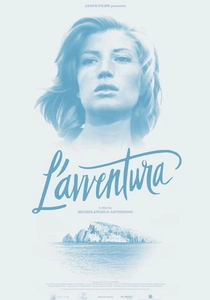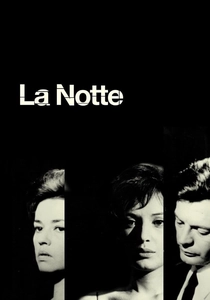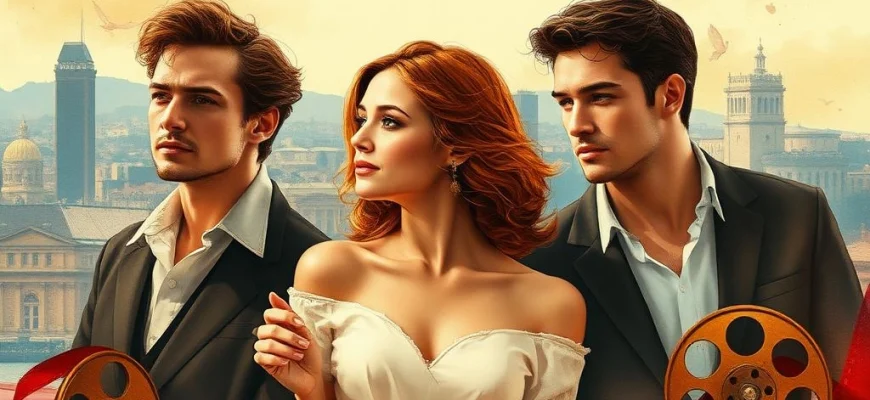If you loved the timeless romance and complex dynamics of François Truffaut's Jules and Jim (1962), you're in for a treat. This article explores 10 movies and shows that capture the same spirit of passionate love triangles, poetic storytelling, and cinematic brilliance. Whether you're drawn to the film's free-spirited characters or its innovative direction, these recommendations will satisfy your craving for more.

Elevator to the Gallows (1958)
Description: A tense, stylish thriller that combines noir elements with a jazz-infused score, exploring themes of fate and moral ambiguity.
Fact: The film's iconic jazz soundtrack was improvised by Miles Davis in a single recording session. It was the director's debut feature and a critical success.
 Watch Now
Watch Now 
Hiroshima Mon Amour (1959)
Description: A haunting exploration of memory and trauma, blending personal and historical narratives through poetic dialogue and innovative editing techniques.
Fact: The film's script was initially commissioned as a documentary about Hiroshima. It was one of the first films to address the atomic bomb's impact on individuals.
 Watch Now
Watch Now 
The 400 Blows (1959)
Description: A poignant coming-of-age story that explores themes of alienation and freedom, marked by its raw, documentary-like style and deep emotional resonance.
Fact: The film's iconic final freeze-frame shot was improvised during filming. It was the first in a series of semi-autobiographical films by the director.
 Watch Now
Watch Now 
Breathless (1960)
Description: A groundbreaking film that redefined cinematic storytelling with its innovative use of jump cuts and naturalistic dialogue, capturing the essence of youthful rebellion and existential ennui.
Fact: The film was shot on a shoestring budget, with much of the dialogue improvised on set. It was a major influence on the French New Wave movement.
 Watch Now
Watch Now 
L'Avventura (1960)
Description: A groundbreaking film that subverts traditional narrative expectations, focusing on themes of alienation and the search for meaning in a seemingly indifferent world.
Fact: The film was booed at its Cannes premiere but later won the Jury Prize. Its unconventional structure influenced countless filmmakers.
 Watch Now
Watch Now 
La Notte (1961)
Description: A meditative examination of a disintegrating marriage, marked by its slow pacing, introspective tone, and striking black-and-white cinematography.
Fact: The film was shot in Milan and features real locations to enhance its sense of realism. It is often considered part of a thematic trilogy with two other films by the same director.
 Watch Now
Watch Now 
Last Year at Marienbad (1961)
Description: A mesmerizing, enigmatic film that plays with memory and reality, featuring dreamlike visuals and a fragmented narrative that challenges conventional storytelling.
Fact: The film's labyrinthine structure and ambiguous plot have sparked countless interpretations. Its striking cinematography was achieved using mirrors and elaborate set designs.
 Watch Now
Watch Now 
The Umbrellas of Cherbourg (1964)
Description: A visually stunning musical that blends everyday life with operatic emotion, using color and music to heighten the emotional impact of its romantic narrative.
Fact: Every line of dialogue in the film is sung, making it a unique hybrid of musical and drama. The film's candy-colored sets were inspired by 1950s Technicolor musicals.
 Watch Now
Watch Now 
Pierrot le Fou (1965)
Description: A vibrant, chaotic exploration of love and freedom, blending pop art aesthetics with a nonlinear narrative and existential themes.
Fact: The film's vivid color palette was inspired by comic books and advertisements. It was initially met with mixed reviews but is now considered a classic.
 Watch Now
Watch Now 
My Night at Maud's (1969)
Description: A philosophical exploration of love, chance, and morality, characterized by its intellectual dialogue and restrained, naturalistic style.
Fact: The film is part of a series known as the 'Moral Tales,' each exploring ethical dilemmas through intimate conversations. It was shot in black and white to emphasize its stark, wintry setting.
 Watch Now
Watch Now 








